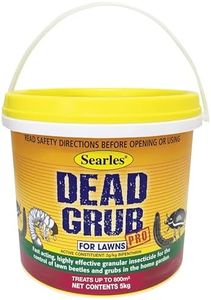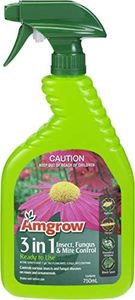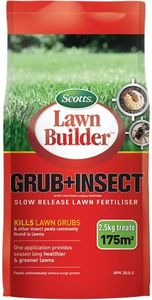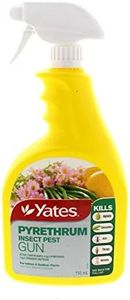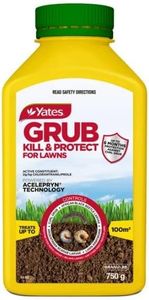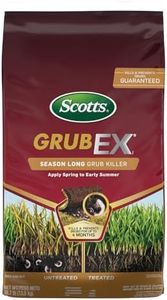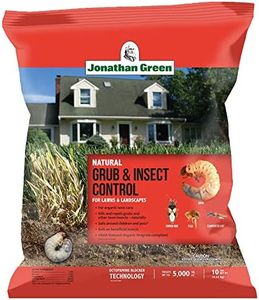We Use CookiesWe use cookies to enhance the security, performance,
functionality and for analytical and promotional activities. By continuing to browse this site you
are agreeing to our privacy policy
10 Best Grub Killers
From leading brands and best sellers available on the web.Buying Guide for the Best Grub Killers
Choosing the right grub killer is important for maintaining a healthy lawn and preventing damage from beetle larvae. With various types of grub killers and formulations available, it’s essential to know what to look for based on your lawn’s needs and the severity of the infestation. Start by identifying the problem – if you see brown patches, birds digging in the lawn, or grubs when you peel back the turf, you may need to take action. The time of year and your long-term lawn care goals will shape your choice as well.Grub Killer TypeThe type of grub killer refers to whether it’s a preventive or curative product. Preventive types are applied before grubs hatch and work best if you want ongoing protection and to stop grubs before they become a problem. Curative types target grubs that are already present and causing damage. Curative products work quickly to reduce existing infestations. Knowing when grubs are most active in your region helps you decide which type to use based on whether you need to prevent future issues or tackle a current one.
Active IngredientActive ingredient refers to the chemical or natural substance that targets the grubs. Different active ingredients work in different ways and vary in their effectiveness against certain grub species. Common chemical options include imidacloprid (for prevention) and carbaryl or trichlorfon (for curative action), while natural options may use milky spore or beneficial nematodes. Consider whether you prefer a traditional chemical solution for fast results, or natural, more environmentally friendly options if you are concerned about pets, children, or local wildlife.
Application MethodApplication method describes how the product is applied, such as granules, liquid sprays, or water-dispersible powders. Granules are easy to spread with a broadcast spreader and are often preferred for larger lawns, while liquids can be sprayed with a hose attachment for even coverage. Choose a method that fits your lawn’s size and your comfort with application equipment. If you’re looking for ease, granules might suit you better; for spot treatment or more targeted application, liquids could be ideal.
Coverage AreaCoverage area tells you how much lawn space one package can treat. It’s typically measured in square feet or square meters. Understanding the size of your lawn will help you avoid buying too much or too little product. Match the coverage area on the label to your lawn measurements to ensure you treat the whole affected area without waste.
Safety and Environmental ImpactThis specification is about how the product affects people, pets, and the environment. Some grub killers can be harmful to beneficial insects, birds, or aquatic life, while others are labeled as safe for use around children and pets. If you have pets, children, or want to avoid harming pollinators, look for products with clear safety and environmental labels. Always read and follow safety instructions to minimize risk.
Timing and EffectivenessTiming and effectiveness refers to how quickly and efficiently the grub killer works and when it should be applied. Some products require precise timing (such as applying when grubs are young and feeding), while others have a broader window of effectiveness. If you need fast results, check the product’s claim for how soon you’ll see improvement. If you want season-long protection, look for long-lasting, preventive formulas. Your choice should align with whether you’re treating an immediate infestation or planning ahead for the season.

